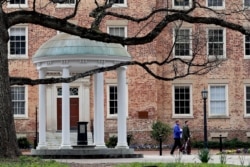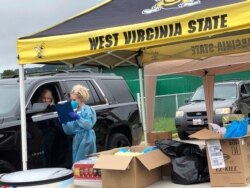Student Union
COVID-19 Infections Rising Among Young People on US University Campuses
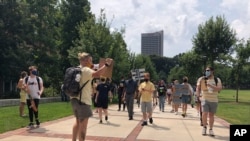
Reports of COVID-19 cases are growing on university campuses as schools reopen for the fall semester.
The University of North Carolina at Chapel Hill quickly reversed its in-person classes as 135 positive COVID-19 cases, 130 students and five employees emerged after the first week of classes from Aug. 10 to Aug. 16.
“We have seen COVID-19 positive rate rise from 2.8% to 13.6% at Campus Health,” stated a letter posted on Monday to the university’s website.
Almost 1,000 (954) students have been tested, 177 are in isolation and 349 are in quarantine, both on and off campus, according to the letter. The university will shift all undergraduate in-person instruction to remote learning, effective Wednesday, Aug. 19.
Oklahoma State University announced Aug. 15 there were 23 positive COVID cases in an off-campus sorority house. The entire house is in isolation or quarantine and will be prohibited from leaving the facility.
The University of Wyoming also reported Monday 38 active cases among students and staff.
Two involve students living in the university’s residence halls, and the other 36 cases involve students and employees living off campus. Both groups are in isolation.
Boston University’s ‘COVID-19 Testing Data Dashboard’ showed eight positive tests cumulative from July 27.
The University of Notre Dame in Indiana also saw a spike in COVID-19 cases, reporting 59 confirmed positive cases out of 654 total tests since Aug. 3.
Notre Dame officials stated in a letter, “the vast majority of the positive cases appearing in the university’s dashboard this week can be traced to a SINGLE off-campus gathering.”
“The students involved were forthcoming in sharing information with contact tracers. They shared who they interacted with, when and for how long. They also indicated individuals at the gathering were both outside and inside, together for some time, not wearing masks, in a crowded space, and drinking,” it continued.
A New York Times survey of 270 higher education institutions uncovered 6,600 COVID-19 infections among students and staff, as well as 14 coronavirus-related deaths over the course of the pandemic.
In the list, the University of Texas at Austin recorded the most positive cases, with 449 from March 1 to July 28.
University of Central Florida came in second with 438 cases, and University of Georgia recorded 390.
Although many colleges and universities offer comprehensive reopening plans with mask-wearing and social distancing guidelines, research shows that even with such reinforcements the virus would still roam throughout campuses, causing complications.
Philip Gressman, a professor of mathematics at the University of Pennsylvania, and Jennifer Peck, an economics professor at Swarthmore College, created a simulation to “determine whether in-person instruction could safely continue during the pandemic and evaluate the necessity of various interventions.”
The simulation studied the spread of a highly transmissible virus, such as COVID-19, at reasonably large research university and monitored the efficacy of interventions, such as contact tracing, mask-wearing, online instruction, etc.
It consisted of 20,000 students and 2,500 instructors who interacted daily for 100 days.
The results of Gressman and Peck’s model analyzed that a scenario with no interventions from the university would result in the number of people initially infected doubling every 2.185 days.
In other words, more than 2,000 people would be infected within 30 days of the first infection, and about 20,126 people, or 89.4% of the total campus population, would end up infected.
The model also studied the outcome of standard intervention, which would be a combination of quarantine and contact tracing, universal mask-wearing, daily randomized testing of 3% of the university community, and transitioning all classes with 30 or more students to online-only interaction.
Full standard intervention measures in universities “avoid the epidemic tipping point altogether” and keeps cumulative infections below 66 (out of 22,500) in more than 95% of simulations, according to the study.
Gressman and Peck wrote that allowing large in-person courses would increase infections from 43 to 538, and online classes with more than 30 students was the most effective at keeping infection rates low.
Requiring masks was moderately effective: not requiring masks would increase median infections to 131, they wrote. Random testing and contact tracing had the lowest impact, with removing either measures increasing infections to 50 and 47, respectively.
Researchers Kim Weeden and Benjamin Cornwell from Cornell University in New York analyzed how students are interconnected on a college campus and the implications of resuming in-person instruction during the coronavirus pandemic.
Weeden and Cornwell’s study stated that students are “highly interconnected” through their courses and that the nature of enrollment networks makes student populations susceptible to high rates of transmissions.
See all News Updates of the Day
Universities in Middle East building research relationships with China

As China bolsters research relationships with universities in the Middle East, the United States has taken notice – especially when that research involves artificial intelligence.
Reporting for University World News, Yojana Sharma has the story. (March 2024)
Tips for staying safe while studying in the US
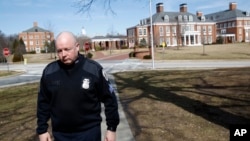
Recent news events have raised safety concerns among some international students studying in the United States.
Adarsh Khandelwal, writing in the India Times, has tips for staying safe from the moment you arrive until the day you complete your studies. (March 2024)
Some colleges are making digital literacy classes mandatory

A 2019 study by Stanford found that most college students can’t tell the difference between real and fake news articles. Amid rampant online disinformation, and the threat of AI-generated images, some schools are making students learn “digital literacy” to graduate.
Lauren Coffeey reports for Inside Higher Ed. (March 2024)
With federal student aid delays, students aren’t sure what college will cost
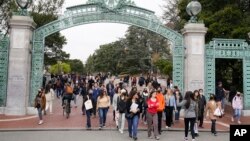
The U.S. Department of Education’s federal student aid form (FAFSA) experienced serious glitches and delays this year.
Now, many students have been admitted to college, but don’t know how much money they’ll need to attend.
Read the story from Susan Svrluga and Danielle Douglas-Gabriel for The Washington Post. (March 2024)
Senator draws attention to universities that haven’t returned remains
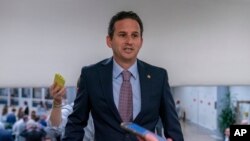
More than 70 U.S. universities continue to hold human remains taken from Native American burial sites, although those remains were supposed to be returned 30 years ago.
Jennifer Bendery writes in Huffington Post that one senator has been using his position in an attempt to shame universities into returning remains and artifacts. (April 2024)




